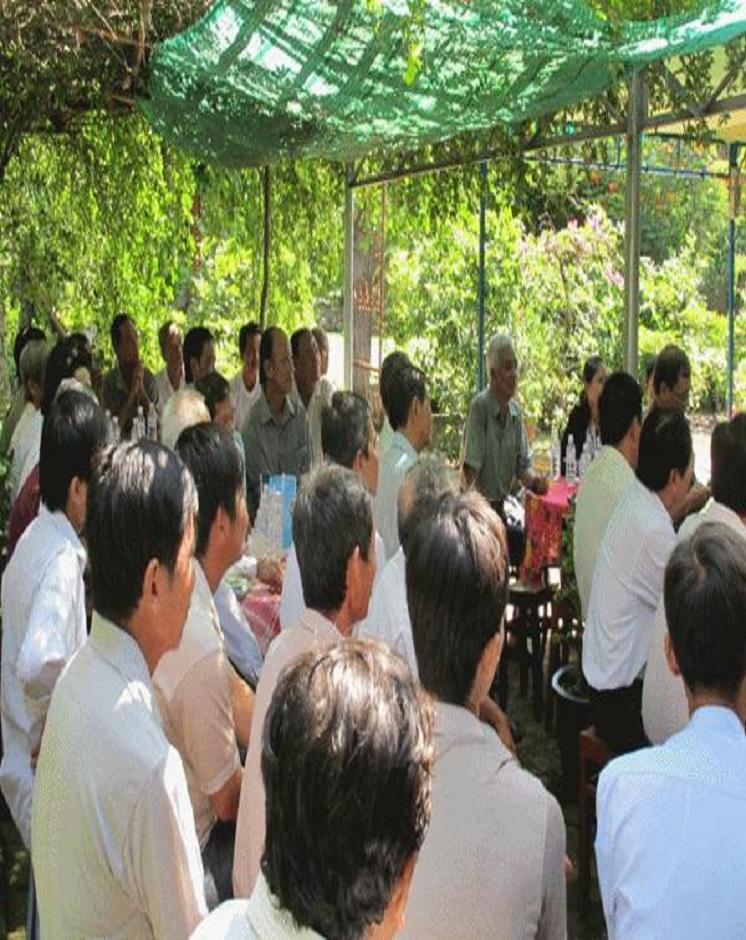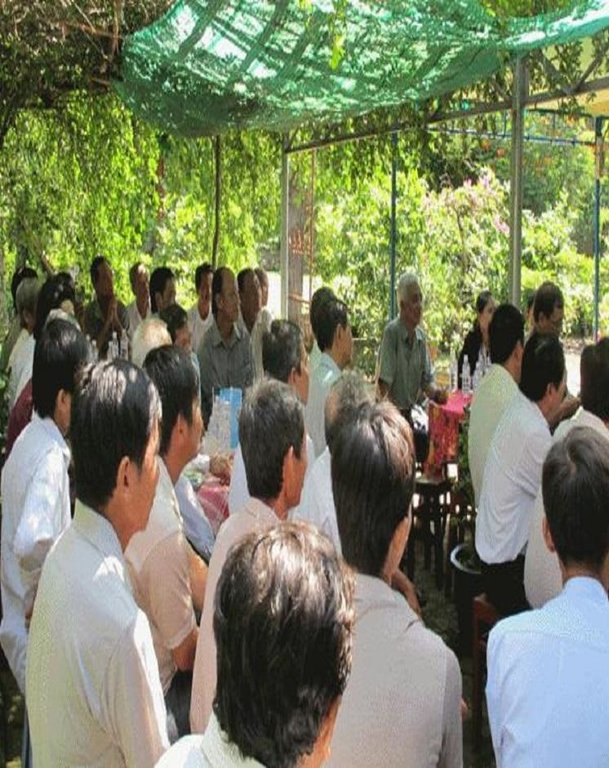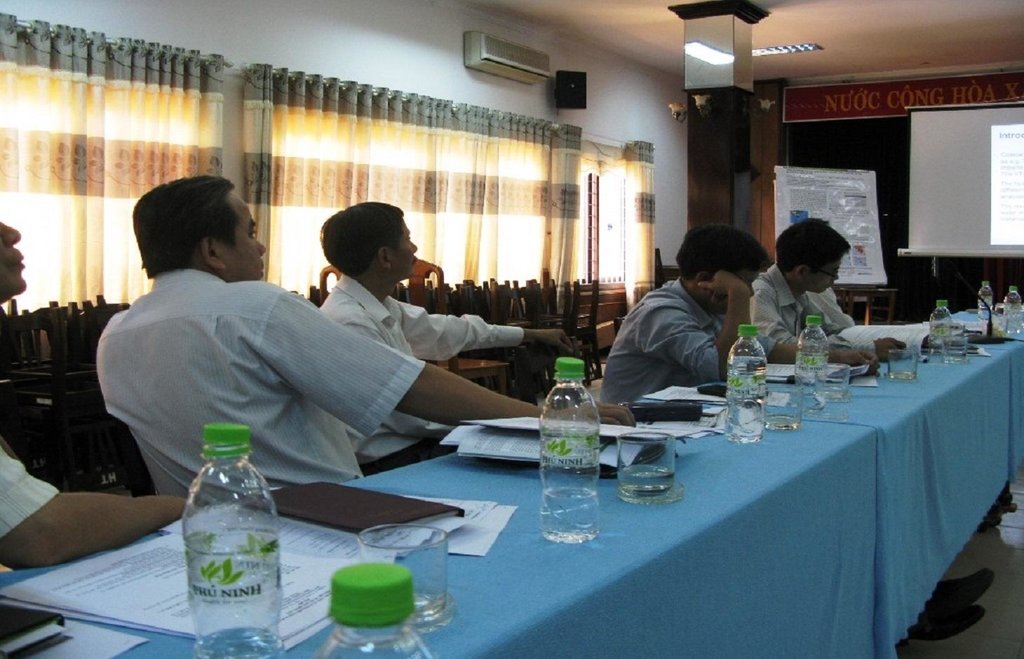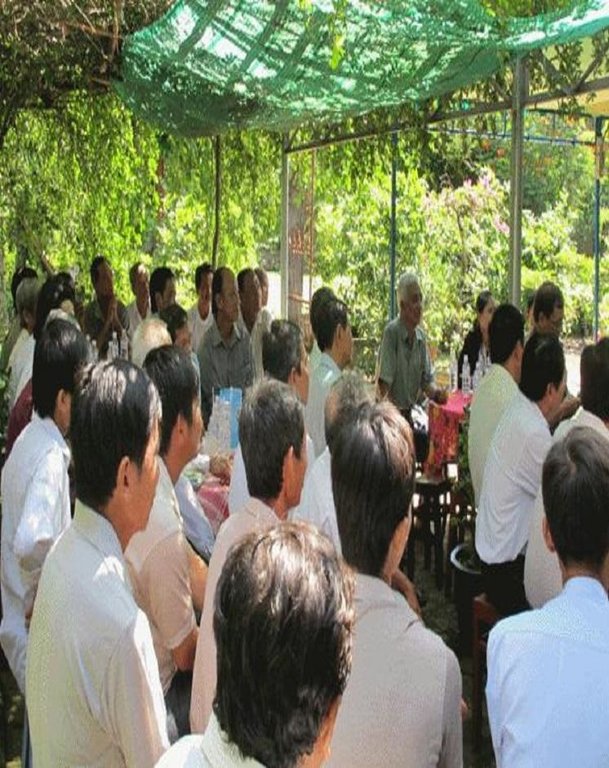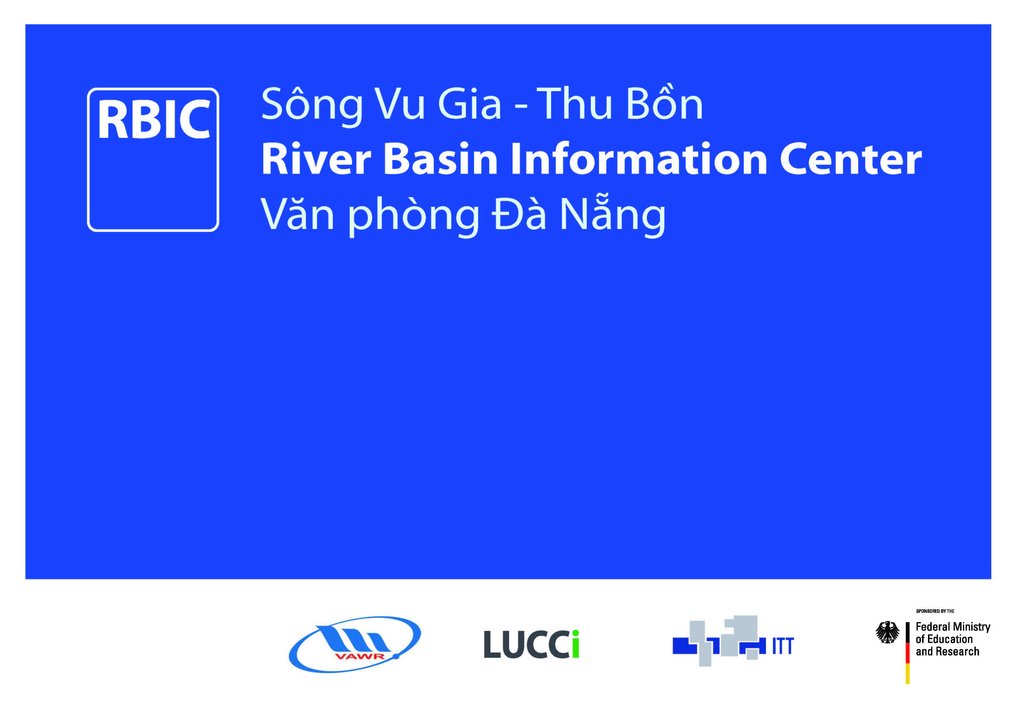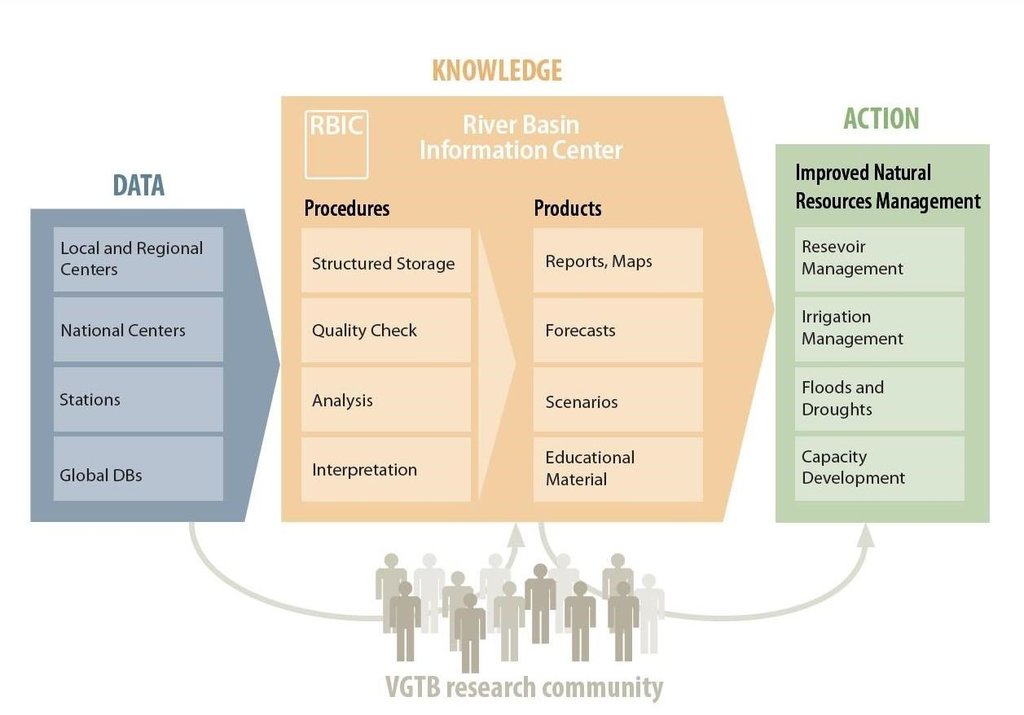Vu Gia Thu Bon River Basin Information Centre [Viêt-Nam]
- Création :
- Mise à jour :
- Compilateur : Justyna Sycz
- Rédacteur : –
- Examinateurs : Fabian Ottiger, Deborah Niggli
Trung tâm thông tin lưu vực sông VGTB (Vietnamese)
approaches_2536 - Viêt-Nam
Voir les sections
Développer tout Réduire tout1. Informations générales
1.2 Coordonnées des personnes-ressources et des institutions impliquées dans l'évaluation et la documentation de l'Approche
Spécialiste GDT:
Nauditt Alexandra
alexandra.nauditt@th-koeln.de
University of Applied Science, TH Köln
Allemagne
Spécialiste GDT:
Ribbe Lars
lars.ribbe@th-koeln.de
University of Applied Science, TH Köln
Allemagne
Spécialiste GDT:
Nguyen Phong
phongicd@gmail.com
Vietnam Academy for Water Resources
Hanoi
Viêt-Nam
Nom du projet qui a facilité la documentation/ l'évaluation de l'Approche (si pertinent)
Book project: Making sense of research for sustainable land management (GLUES)Nom du ou des institutions qui ont facilité la documentation/ l'évaluation de l'Approche (si pertinent)
University of Applied Science, TH Köln (TH Köln) - AllemagneNom du ou des institutions qui ont facilité la documentation/ l'évaluation de l'Approche (si pertinent)
Vietnam Academy for Water Resources (VAWR) - Viêt-Nam1.3 Conditions relatives à l'utilisation par WOCAT des données documentées
Quand les données ont-elles été compilées (sur le terrain)?
27/07/2015
Le compilateur et la(les) personne(s) ressource(s) acceptent les conditions relatives à l'utilisation par WOCAT des données documentées:
Oui
1.4 Références au(x) questionnaire(s) sur les Technologies de GDT
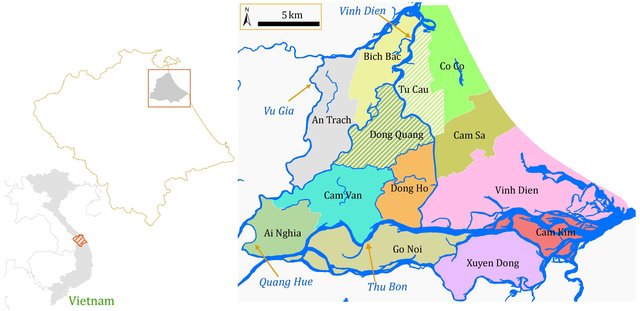
Water saving through reuse of return flow in … [Viêt-Nam]
Return flow from paddy fields is strategically collected before being lost to rivers and is reused as an effective source of agricultural water.
- Compilateur : Justyna Sycz
2. Description de l'Approche de GDT
2.1 Courte description de l'Approche
The VGTB River Basin Information Centre (RBIC) offers decision support tools for stakeholders and aims at providing comprehensive information and consulting services to the water and land users according to their demands.
2.2 Description détaillée de l'Approche
Description détaillée de l'Approche:
Aims / objectives: Sufficient and sustainable water resource management at river basin scale can only be achieved if it is based on dialogue between all relevant stakeholders, and supported by adequate data. It follows then, that a robust system of monitoring, evaluation, reporting and communication is needed. The lack of appropriate management strategies which would bring these tools together has been underlined by stakeholders, and observed by researchers, involved in the research project LUCCi - Land Use and Climate Change Interactions in the VGTB River Basin. In order to offer a comprehensive decision-making support system, based on scientific knowledge and research results, the Institute for Technology and Resources Management (ITT, TH Köln, Germany) in cooperation with the Vietnam Academy for Water Resources (VAWR, Hanoi, Vietnam) established the VGTB River Basin Information Centre in Da Nang. The overall objective of RBIC is to support efficient and sustainable water and land use. The support provided for the implementation of the water saving technology for paddy systems is one of the services offered by the centre.
Methods: The VGTB RBIC is an independent, local institution administrated by the German and Vietnamese coordinators of LUCCi, financed by project sources and located at the Central Department of the Vietnam Academy of Water Resources in Da Nang. As a scientific organization, the VGTB RBIC provides the advantages of impartiality, a detailed knowledge base and a broad interdisciplinary perspective. Through different dissemination activities, such as visits to relevant institutions, information material (brochures, flyers in Vietnamese) as well as training courses and capacity building measures, the relevant stakeholders are well-informed about the activities of the Information Centre. On demand, the following products and services are provided in the VGTB-RBIC: (a) Thematic maps on land use, hydrology and river basin development; (b) A comprehensive database of the VGTB river basin (VGTB RBIS - River Basin Information System, open source) (c) VGTB State of the Basin Report as a decision-support instrument: the report was prepared by the LUCCi research team and provides relevant information on climatic, environmental and socioeconomic data and trends; (d) Hydro-meteorological, hydrograph and salinity data; (e) Flood and drought risk assessment; (f) Scenarios and modelling (reservoir operation, salinity intrusion, irrigation management scenarios); (g) Organization of meetings and discussions on key issues of the development of the VGTB; (f) Training and capacity building services related to the demands of stakeholders.
Role of stakeholders: Thus a heterogeneous stakeholder platform has been established in the case study region that includes scientific institutions, policy makers, public administration representatives as well as private sector companies. It is clear that the major problems of the VGTB River Basin can be only addressed, and adequate solutions identified, if based on active cross-sectoral stakeholder participation. Therefore, the interaction among stakeholders and RBIC plays a key role: the services are offered for the stakeholders, and stakeholder feedback is the basis for providing adequate information services and conducting applied based research.
2.3 Photos de l'approche
2.5 Pays/ région/ lieux où l'Approche a été appliquée
Pays:
Viêt-Nam
Région/ Etat/ Province:
Da Nang
Autres spécifications du lieu :
Central Vietnam
2.6 Dates de début et de fin de l'Approche
Indiquez l'année de démarrage:
2013
Date (année) de fin de l'Approche (si l'Approche n'est plus appliquée):
2015
2.7 Type d'Approche
- fondé sur un projet/ programme
2.8 Principaux objectifs de l'Approche
The Approach focused mainly on other activities than SLM (Water management, agriculture, irrigation, water availability: support the local water users in the implementation of adequate water management strategies)
1. Establish a communication platform to discuss water and land use related problems, and create transparency among water users.
2. Support and foster the science-policy-society dialogue offering a cross-sectoral neutral space for discussion, consulting and capacity building for all stakeholders and water users (farmers, decision-makers, public institutions, private sector companies).
3. Provide a comprehensive information service and decision support system to stakeholders according to their demands. The following specific products and services are provided by the VGTB-RBIC: Thematic maps on land uses, hydrology and river basin development • Comprehensive database of the VGTB river basin (VGTB RBIS - River Basin Information System, open source) • VGTB State of the Basin Report as a decision support instrument: the report was prepared by the LUCCi research team and provides relevant information on climatic, environmental and socioeconomic data and trends • Hydro-meteorological, hydrograph and salinity data • Flood and drought risk assessment • Scenarios and modelling (reservoir operation, salinity intrusion, irrigation management scenarios) • Organization of meetings and discussions on key issues of the development of the VGTB • Training and capacity building services related to the demands of stakeholders.
The SLM Approach addressed the following problems: The lack of communication between the relevant institutions and water users, the demand for comprehensive decision-support instruments, difficulties with data availability - typically distributed and available at different institutions, as well as conflicts over resource use, were the main problems addressed by the approach. The conflicts caused by the rapid expansion of hydropower since 2008 in the VGTB river basin have especially demonstrated the inadequate participation of local stakeholders in planning processes. Hydropower development has adverse effects on downstream water availability, especially during the dry season, affecting drinking water supply and irrigation.
2.9 Conditions favorisant ou entravant la mise en œuvre de la(des) Technologie(s) appliquée(s) sous l'Approche
cadre institutionnel
- entrave
Lack of communication between the institutions and inadequate stakeholder involvement in the decision making process.
Treatment through the SLM Approach: VGTB RBIC offers a cross sectoral communication platform and bring together all relevant stakeholders: organization of workshops and meetings as well as visits to the relevant institutions.
connaissances sur la GDT, accès aux supports techniques
- entrave
A robust system of monitoring system was missed in the region: hydro-meteorological data, monitoring of water quantity.
Treatment through the SLM Approach: A monitoring network has been established as part of the LUCCi project.
autre
- entrave
Lack of information about the river basin in order to ensure an adequate decision making.
Treatment through the SLM Approach: A “State of the Basin Report” including all available data and information about the river basin has been elaborated (climatic, environmental, hydrological, land use and socioeconomic data and trends); River Basin Information System: Comprehensive data base of the VGTB river basin through the open source VGTB River Basin Information System.
3. Participation et rôles des parties prenantes impliquées dans l'Approche
3.1 Parties prenantes impliquées dans l'Approche et rôles
- chercheurs
National and international researchers involved in the LUCCi project
- ONG
Authorities of a Water Management Unit (WMU)
- gouvernement national (planificateurs, décideurs)
Regional relevant institutions (DONRE, MARD, PPC Quang Nam)
- organisation internationale
3.2 Participation des exploitants locaux des terres/ communautés locales aux différentes phases de l'Approche
| Participation des exploitants locaux des terres/ communautés locales | Spécifiez qui était impliqué et décrivez les activités | |
|---|---|---|
| initiation/ motivation | passive | Stakeholder analysis (including of all ineterested groups) |
| planification | passive | Local and regional decision makers are involved: workshops, discussions and surveys in order to collect relevant socio-economic and land use data, identify research demand and challenges |
| mise en œuvre | soutien extérieur | Land user decide on whether and which technologies they want to implement. |
| suivi/ évaluation | aucun | |
| Research | interactive | Land users provide relevant information and data on their farms (size, yields) for research purposes. 'Aims/Objectives” elaborated and prepared for the stakeholders by Vietnamese and international researchers based on scientific results and data from land users. |
3.3 Diagramme/ organigramme (si disponible)
Description:
The services of the VGTB Info-Centre are provided by a team of researchers and experts from national and international institutions. The services and products are offered to the following target groups: Public administration and decision-makers in Central Vietnam, Land and water users, researchers, and private sector companies in the field of water and land management (e.g. irrigation, hydropower construction)
Interaction and communication between the groups involved:
- based on stakeholders and target groups’ feedback, the centre can provide services suited to the needs of the regional institutions, considering current socioeconomic development and environmental changes in the river basin
- the centre provides a communication platform for the target groups involved from different sectors: private companies, public administration, researchers, land and water users.
3.4 Prises de décision pour la sélection de la Technologie/ des Technologies
Indiquez qui a décidé de la sélection de la Technologie/ des Technologies à mettre en œuvre:
- principalement les spécialistes de la GDT, après consultation des exploitants des terres
Expliquez:
Decisions on the method of implementing the SLM Technology were made by mainly by SLM specialists with consultation of land users
4. Soutien technique, renforcement des capacités et gestion des connaissances
4.1 Renforcement des capacités/ formation
Une formation a-t-elle été dispensée aux exploitants des terres/ autres parties prenantes?
Oui
- decision makers/ experts/ local scientists
Formats de la formation:
- zones de démonstration
Thèmes abordés:
key aspects of an integrated river basin management (monitoring, data management and hydrological modelling); current situation, development and challenges in the VGTB river basin; training on adequate tools and technologies (alternative irrigation strategies for paddy fields: reuse of return flow)
4.2 Service de conseils
Les exploitants des terres ont-ils accès à un service de conseils?
Oui
Spécifiez si le service de conseils est fourni:
- dans des centres permanents
Décrivez/ commentez:
Name of method used for advisory service: River Basin Information Center - RBIC; Key elements: Stakeholder Workshops, Trainings on alternative irrigation strategies for paddy fields: reuse of return flow
Advisory service is very adequate to ensure the continuation of land conservation activities; Researchers (VAWR): can offer trainings and conduct dissemination activities; Local institutions (e.g. People's Committee of Quang Nam Province): training, dissemination activities, financial support
4.3 Renforcement des institutions (développement organisationnel)
Des institutions ont elles été mises en place ou renforcées par le biais de l'Approche?
- oui, beaucoup
Spécifiez à quel(s) niveau(x), ces institutions ont été renforcées ou mises en place:
- local
Précisez le type de soutien:
- renforcement des capacités/ formation
- research
Donnez plus de détails:
Training for decision makers and professionals; Research: hydrological modeling
4.4 Suivi et évaluation
Le suivi et l'évaluation font ils partie de l'Approche? :
Oui
Commentaires:
management of Approach aspects were ad hoc monitored by project staff through observations
management of Approach aspects were ad hoc monitored by project staff through measurements
There were several changes in the Approach as a result of monitoring and evaluation: The approach was based on the stakeholder-research interactions. The approach objectives and methodology was adapted to the local conditions and challenges.
There were no changes in the Technology as a result of monitoring and evaluation
4.5 Recherche
La recherche a-t-elle fait partie intégrante de l’Approche?
Oui
Spécifiez les thèmes:
- sociologie
- technologie
- hydrological modeling
Donnez plus de détails et indiquez qui a mené ces recherches:
The implementation of return flow from paddy fields as alternative irrigation technology under local conditions was performed under the framework of LUCCi project (ITT).
Research was carried out both on station and on-farm
5. Financement et soutien matériel externe
5.1 Budget annuel de la composante GDT de l'Approche
Si le budget annuel précis n'est pas connu, indiquez une fourchette:
- < 2 000
Commentez (par ex. principales sources de financement/ principaux bailleurs de fonds):
Approach costs were met by the following donors: international (International (German Federal Ministry of Education and Research, BMBF)): 70.0%; government (National (Vietnam Academy for Water Resources, VAWR) ): 30.0%
5.4 Crédits
Des crédits ont-ils été alloués à travers l'Approche pour les activités de GDT?
Non
6. Analyses d'impact et conclusions
6.1 Impacts de l'Approche
Est-ce que l'Approche a aidé les exploitants des terres à mettre en œuvre et entretenir les Technologies de GDT?
- Non
- Oui, un peu
- Oui, modérément
- Oui, beaucoup
Decreased water use;efficient resource management
Est-ce que l'Approche a autonomisé les groupes socialement et économiquement défavorisés?
- Non
- Oui, un peu
- Oui, modérément
- Oui, beaucoup
Did other land users / projects adopt the Approach?
- Non
- Oui, un peu
- Oui, modérément
- Oui, beaucoup
Did the Approach lead to improved livelihoods / human well-being?
- Non
- Oui, un peu
- Oui, modérément
- Oui, beaucoup
6.2 Principale motivation des exploitants des terres pour mettre en œuvre la GDT
- augmenter la production
- well-being and livelihoods improvement
Increase water use efficiency
6.3 Durabilité des activités de l'Approche
Les exploitants des terres peuvent-ils poursuivre ce qui a été mis en œuvre par le biais de l'Approche (sans soutien extérieur)?
- oui
6.4 Points forts/ avantages de l'Approche
| Points forts/ avantages/ possibilités du point de vue du compilateur ou d'une autre personne ressource clé |
|---|
| The approach is managed by researchers. This has the advantages of impartiality, a detailed knowledge base and a broad interdisciplinary perspective. |
| Adaptability to stakeholders needs. (How to sustain/ enhance this strength: Strong interaction between the management of the VGTB RBIC and regional stakeholders is necessary: organize regular meetings and workshops; Stakeholders regularly inform the centre about their information requirements.) |
|
Monitoring, evaluation, reporting and communication are integrated, summarized and carried out by one institution. |
6.5 Faiblesses/ inconvénients de l'Approche et moyens de les surmonter
| Faiblesses/ inconvénients/ risques du point de vue de l’exploitant des terres | Comment peuvent-ils être surmontés? |
|---|---|
| It needs long-term commitment from research, from extension, and from the government to support such a service for the benefit of all people and the environment. |
| Faiblesses/ inconvénients/ risques du point de vue du compilateur ou d'une autre personne ressource clé | Comment peuvent-ils être surmontés? |
|---|---|
|
The VGTB RBIC is a new institution, unknown to the local stakeholders. |
Provide dissemination activities and trainings in order to explain the decision making process and the role of VGTB RBIC as support instrument. |
|
The approach was developed as part of a research project. There is the risk, that the scale of activities and services will be reduced after the end of the project duration. |
Try to obtain financial resources by the local and public institutions in order to develop and manage the center after the end of the project. |
7. Références et liens
7.1 Méthodes/ sources d'information
- visites de terrain, enquêtes sur le terrain
- interviews/entretiens avec les exploitants des terres
7.2 Références des publications disponibles
Titre, auteur, année, ISBN:
Ribbe, L., Viet, Quoc Trinh, ABM Firoz, Anh Thu Nguyen, Uyen Nguyen, Alexandra Nauditt (2016) Integrated River Basin Management in the Vu Gia Thu Bon Basin
Disponible à partir d'où? Coût?
Nauditt, Ribbe (editors) Land Use and Climate Change Interaction in Central Vietnam, Springer Book Series Water Resources Management and Development
Liens et modules
Développer tout Réduire toutLiens

Water saving through reuse of return flow in … [Viêt-Nam]
Return flow from paddy fields is strategically collected before being lost to rivers and is reused as an effective source of agricultural water.
- Compilateur : Justyna Sycz
Modules
Aucun module trouvé


